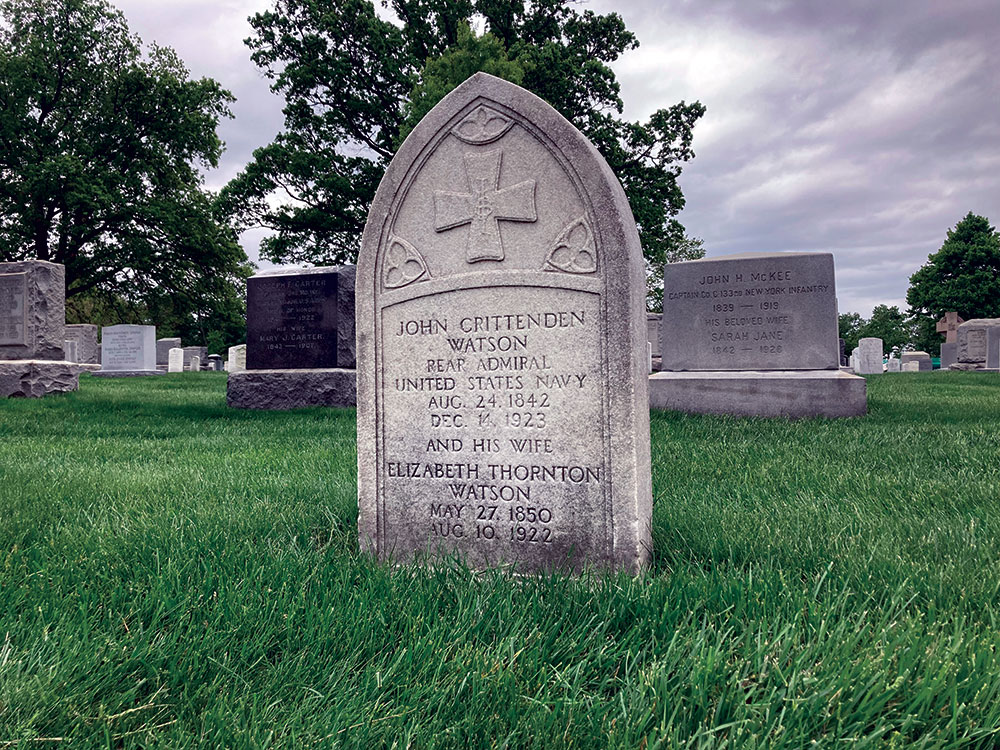In almost every engraving, lithograph or painting of Rear Adm. David G. Farragut at the Battle of Mobile Bay, he is lashed with rope to the rigging of his flagship. The imagery serves as an accurate portrayal of one of the most enduring acts of courage in American military history.

Ever wonder who secured him in this manner? The individual is pictured here: Lt. John Crittenden Watson. A native of Kentucky, his grandfather, John J. Crittenden, had a long career in state and national politics with the Whig, Know Nothing and Constitutional Union parties. He is perhaps best remembered for his last-ditch failed effort to avert civil war with a legislative package of resolutions and Constitutional amendments known as the Crittenden Compromise. Crittenden died in 1863 without learning the outcome of the conflict he had worked to avoid.

Meanwhile, his grandson graduated from the U.S. Naval Academy and remained loyal to the Constitution. Early in the war, on a stormy night in November 1861, Watson distinguished himself along the South Carolina coast. He managed the cables and hawsers between his frigate Sabine and the foundering transport Governor. About 500 Marines and crew aboard the Governor were saved, and Watson received praise for keeping the vessels lashed together.
More than two years later at Mobile Bay, Watson lashed Farragut to the rigging of the flagship Hartford. A postwar sketch of Watson’s career shared this anecdote about the event in a letter to his mother. “At length I lashed him to the rigging with my own hands, having in vain begged him not to stand up in such an exposed place.” The sketch also noted, “Between the young lieutenant and his gallant commander there existed a close and affectionate regards, and in his official report of this battle Farragut made particular mention of his services: ‘Lieut. J. Crittenden Watson, my flag lieutenant, has been brought to your notice in former dispatches. During the action he was on the poop attending to signals, and performing his duties, as might be expected, thoroughly. He is a scion worthy the noble stock he sprang from, and I commend him to your attention.’” Farragut was not wounded, but Watson was after a shell fragment hit him.

Watson recovered and enjoyed a long career in the navy, attaining the rank of rear admiral. He married in 1874, fathered eight children, and lived until age 81, dying in 1923.

Most Hallowed Ground is part of the Arlington National Cemetery (ANC) Project. Established by Jim Quinlan of The Excelsior Brigade, its mission is to identify all Civil War veterans on the grounds, and to provide a biographical sketch and photograph of each individual. If you have an image to share, or for more information, contact Jim at 703-307-0344.
SPREAD THE WORD: We encourage you to share this story on social media and elsewhere to educate and raise awareness. If you wish to use any image on this page for another purpose, please request permission.
LEARN MORE about Military Images, America’s only magazine dedicated to showcasing, interpreting and preserving Civil War portrait photography.
VISIT OUR STORE to subscribe, renew a subscription, and more.

